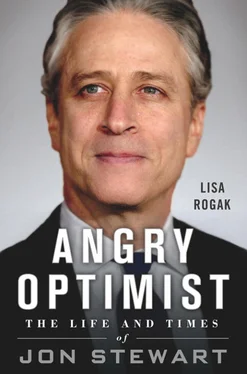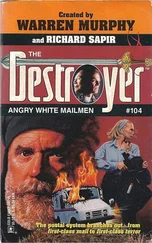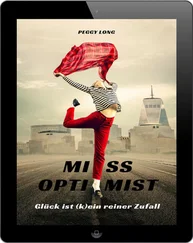Ganis soon learned that when it came to the administrative staff, writers, and on-air talent at the show, the most valuable intern was whoever was the general production intern that day, whose primary job was to buy food to stock the entire office, including the green room, the control room, the writers’ lounge, and the kitchen. The list was preprinted and long, with around fifty different items to inventory and check off before heading to D’Agostino, the supermarket around the block.
The list included the following:
• Three boxes of cookies for the control room
• Three bags of candy for the green room
• Soy milk—vanilla if they have it
• Seven blocks of Philadelphia cream cheese
• Three Fuji apples
• Three boxes of Kleenex (unscented)
• Lucky Charms EVERY DAY
The intern in charge of the shopping was supposed to first check to see if anything needed replacing; if, for instance, there were only two Fuji apples in the house, the intern would buy one more that day.
Food responsibilities were not limited to the general production intern. For the intern assigned to the writers’ lounge, the first order of business was “to bring the writers’ bagel basket up at 9:30 and bring it back down to the kitchen between 10:30 and 10:45.”
The intern’s primary responsibility boiled down to the care and feeding of the writers.
* * *
Besides the food, one of the first things that stand out at the studio are the dogs.
Lots of them.
One of the perks of working at The Daily Show is that employees are allowed to bring their dogs to work, which contributes to the somewhat relaxing atmosphere. While not everyone brings their own dog to work every day—including Stewart—at least four or five will be on hand at any one time. Stewart will sometimes bring his pit bulls in.
But it’s not just fun and games. “We all feel this responsibility to keep the dogs pretty well-behaved,” said Jen Flanz, a co-executive producer of the show who is often accompanied by Parker, her Lab mix. “If someone comes in and thinks this is a free-for-all, they would be mistaken.”
Supervising producer Tim Greenberg often brings his rescue Pointer-mix named Ally to the studio, and agrees with Flanz. “Like the show itself, there really is a strict discipline underlying what looks like a free-form,” he said. “This is a giant dog playground. The dogs run around, and there are at least eight to ten treat stations throughout the office. Ally’s got her own schedule of things she does. She gets exercise running up and back. The only thing that would make it better is if there were grass and squirrels [inside].”
According to Hillary Kun, supervising producer and the show’s talent booker, “the dogs loosen up the place. Personally, if I have a bad day, or am stressed, it’s nice having the company of the dogs, to have them come into my office. Dogs are therapeutic.”
“We have animals around to help us relax a little, reminders that you shouldn’t take life too seriously,” added correspondent Wyatt Cenac.
“The dogs that get to work at this office have won the dog lottery,” said Justin Chabot, artistic coordinator and DV shooter.
“I feel like I’m that much harder to get rid of because the guy who runs the show loves Ally,” Greenberg jokes.
At least once, the office dogs have made it onto the air. In January 2009, Anderson Cooper conducted a dog debate—tagged as a Puppedential debate in a series called “Road to the Doghouse”—to help the Obamas pick the best dog to live in the White House.
The dogs in the office have had a kind of chain reaction effect. Formerly dog-free employees who end up spending a lot of the workday around dogs will often go out and adopt one of their own. Former correspondent John Oliver is one of them. He adopted a golden retriever puppy named Hoagie in late 2011 because “she really doesn’t give a shit about The Daily Show, which I find enormously helpful at the end of the day.”
He brought her to the studio one day when she was still a puppy, but she became so excited by the other dogs that she just wanted to play, and that created problems for Oliver when he was under deadline.
With that said, he is grateful for the canine company. “I don’t know what we would do without these dogs,” he said. That difference was made clear one day when Pervez Musharraf, the former president of Pakistan, was a guest on the show and a memo went out the day before that all staff dogs had to stay home because of the bomb-sniffing dogs that would be checking the place out before Musharraf’s arrival.
“We could really feel the difference when they weren’t here,” said Oliver. “It would be a very different place if there weren’t dogs walking around.”
Though Daily Show staffers first started to bring their dogs to work during the Craig Kilborn era, Stewart has done his part to actively encourage it, with a few limits. “It makes for a very nice environment,” he said. “There are rules and everybody has to be responsible. You gotta potty train them. You gotta make sure that if there are issues with other dogs that they are dealt with the right way.”
The combination of dogs roaming through the halls and the free food available created an uncomfortable situation for a period of time. “We went through a period where we had to tell people to stop feeding the dogs off the catering table, because six months into it, everybody looked like Dom DeLuise!” said Stewart. “The dogs were just lying on the floor, bloated, and ready to pass out. So we’ve instituted some discipline, but it’s really nice to have them around.”
In addition to helping the employees feel better, the dogs also make guests, some of which have included Jennifer Aniston, Ricky Gervais, and Betty White, feel more at ease before they head out in front of the camera for a segment with Jon. When Senator Barack Obama made his first appearance on the show, he immediately sprawled on the floor to commune with the dogs.
* * *
“As a comedian, there’s a lot of love you get from an audience’s laughter and applause,” said Bob Wiltfong, who worked as a Daily Show correspondent from 2004 to 2005. “As a professional comedian, it’s my theory that people get into comedy because there’s something missing in their own personal life, and they need that void filled through laughter and acceptance onstage.”
“Some of the most miserable people I’ve ever met are comedy people,” he noted, though he added that Colbert was one of the rare exceptions. “It made for an interesting dynamic at The Daily Show, which had some of the smartest, funniest people I’ve known, all moving toward one common goal, but the flip side was that there were a lot of miserable curmudgeonly people working there. In general, comedy just isn’t an environment that lends itself toward happiness.”
“It’s like a dysfunctional family,” said Lewis Black.
Even though it’s their job to be funny, the pressure of meeting a regular nightly deadline as well as constantly trying to figure out where you are in the pecking order takes its toll on people putting together a comedy show, whether they’re writers or on-air talent. Wiltfong also noticed the different ways in which Jon and Stephen approached their jobs. “What you see on air with both those guys is pretty much what they’re like off air,” he said. “In order for Jon to do some of the comedy on The Daily Show for so many years and for it to be high quality, it has to come from a place of anger, because then it’s truly biting and gets at the truth. In real life he’s not a ball of laughs, because he’s pretty upset about what’s going on in the world.”
Читать дальше












